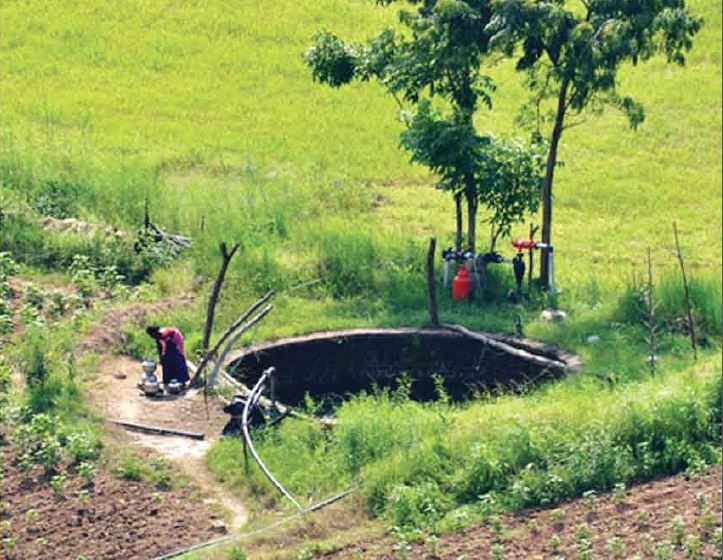
Share
Related Links
Watershed development in India: Case study summary
Attachments
Watershed Development in India An Approach Evolving through Experience_0.pdf
Volume II-Annexes Catchment Assessment and Planning for Watershed Management_0.pdf
Volume I-Main Report Catchment Assessment and Planning for Watershed Management_0.pdf
Summary Report Catchment Assessment and Planning for Watershed Management_0.pdf
Keywords
Authors/Partners
World Bank
Institutional Analysis and Landscape Level Planning Guidelines for Watershed Development in India
CHALLENGE
Improved watershed management will be crucial to meet growing food demand in India, for example by: recharging local aquifers and improving downstream water flows; decreasing soil erosion; increasing agricultural productivity; and helping farmers adapt to climate change. Experts believe that an additional 102 million tons of food grains need to be produced annually by 2020 to meet national nutritional needs under moderate population growth forecasts, 38 million tons of which will need to come from either rainfed lands or imports.
However, rainfed regions have lagged far behind and have experienced severe resource degradation due to inappropriate land use, poor husbandry and low investments. Longer-term climate change adds another worrying dimension. Climate change requires new adaptation measures by farmers, especially small and marginal farmers who are the most vulnerable to these forecast impacts.
The Integrated Watershed Management Program (IWMP), financed through the Department of Land Resources, currently forms the cornerstone of the Government of India's support to watershed development, covering 27 states and proposing to invest over US$6.6 billion through a 10-year period to 2017. Besides the IWMP, a number of other centrally financed schemes are related to watershed management, agriculture and rural livelihoods, which to varying degrees address development needs in rainfed areas. The IWMP has been slowly rolling out and expanding its reach across India since 2009. But, it has not delivered expected results evenly across the country or to the desired levels. In moving forward to improve the IWMP model and execution, a number of key issues outlined recently by the Planning Commission and various other reports/experts have been identified.
Two key issues are:
Fragmented programming and partial solutions. Given their ecological characteristics, developing rainfed areas requires a broad watershed approach. Large budgets are now available for IWMP and several other schemes for the development of rainfed areas within the Ministry of Rural Development. However, each of these is conceived and implemented in departmental silos without unified mechanisms for coordination and convergence. As a result, these programs do not lead to area development, potential synergies are lost, and investments, interventions, and results remain sub-optimal.
Narrow planning scale. The IWMP is executed through clusters of micro-watersheds (each usually 500 ha to 700 ha) covering an average of 5,000 ha. This scale is appropriate for participatory planning and implementation communities. However, a larger landscape assessment/planning framework ranging up to 25,000 ha is also needed where broader land and water issues can be identified, and a more coordinated approach developed to converge government schemes with the IWMP. The current IWMP model also does not fully incorporate surface and groundwater assessments into management and monitoring activities to guide integrated planning at sub-watershed and micro-watershed scales.
APPROACH
This activity aims to address some of the issues above by helping to:
- Improve intra- and inter-ministerial convergence in watershed management in India;
- Develop landscape level catchment assessment/planning methods and guidelines for India; and
- Disseminate knowledge on good practices in watershed management building on a draft report prepared under a previous PROFOR activity.
RESULTS
The activity was successfully completed. The final report “Catchment Assessment and Planning for Watershed Management” is now available to the left along with a summary report. A launch workshop was held in Washington, D.C., in October 2014. A similar workshop was held in Delhi in December 2014. One article based on this work was published in a national journal in India. In addition, the “Operational Guidelines for Benchmarking Watershed Management Outcomes” prepared by the Ministry of Rural Development of India and the World Bank discussion paper “Watershed Development in India: An Approach Evolving through Experience” can be downloaded from this page.
Some key insights and lessons are:
- Micro-watersheds are the appropriate scale for program implementation with communities, with guidance by larger scale catchment assessments.
- Decentralized and participatory development is a necessary approach for success.
- Invest in participatory, evidence-based micro-watershed plans with communities.
- Invest in capacity building and information sharing to build sustainability and a body of knowledge.
- Invest in comprehensive monitoring and evaluation (M&E) to track implementation and support management.
For stories and updates on related activities, follow us on twitter and facebook , or subscribe to our mailing list for regular updates.
Author : World Bank
Last Updated : 06-16-2024








